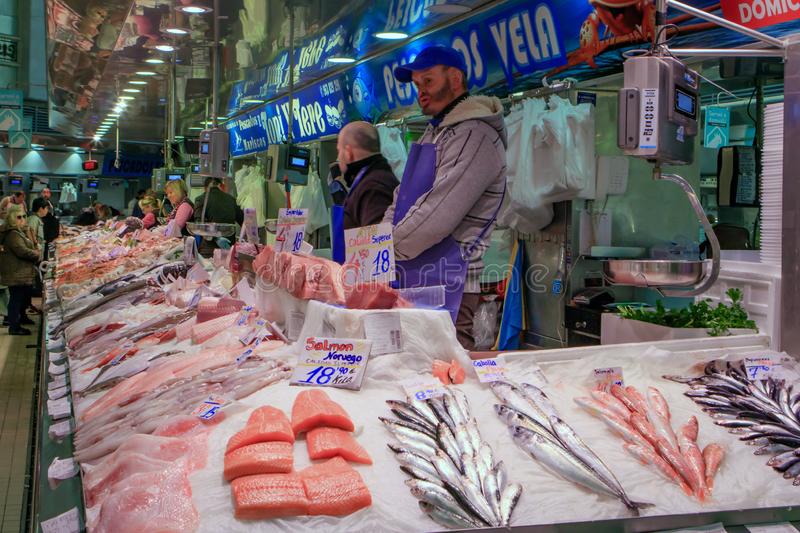Shopping in local shops
You may want to try out your Spanish and do your food shopping in some of the local shops and markets

Valencia Fish Market - www.dreamstime.com
If you are on a self-catering holiday or have recently moved to Spain, you may want to try out your Spanish and do your food shopping in some of the local shops and markets. It’s well worth the effort as there is excellent produce available.
Most towns will have a weekly open-air street market with a wide range of goods and produce for sale. You will find stalls with fruit and vegetables, flower stalls, clothes, leather goods, local ceramics and linens. Check with the local tourist office for the day the ‘mercadillo’ is held.
Most towns will also have one or more indoor municipal markets – the ‘mercado municipal’ for fresh meat and fish, vegetables and fruit. They are generally open only in the mornings from Mondays to Saturdays. Herbs and spices, and raisins and almonds etcetera are usually also on sale here. You will also find fresh bread here, or you can buy it at your local baker’s, the ‘panadería’.
The local fishmonger is the ‘pescadería’, where you will find fresh frozen fish and shellfish. Be prepared to get there early before the best catch is sold out. Some may open only in the mornings and will be closed on Mondays as the fishermen tend not to put out to sea on Sunday nights. It’s a point to be borne in mind if you decide to eat out on a Monday, as only frozen fish may be available on the menu.
The butcher’s is the ‘carnicería’, which are open mornings and afternoons Monday to Friday and on Saturday mornings. You may experience a long wait here as many of the butchers prepare the meat on demand and you will often find someone in the queue ahead of you who seems to be shopping for their entire week’s supply of meat, only to see them back there again the following day.
Be patient, and make use of the seats which are supplied for the waiting customers. Don’t expect anyone to be queuing up nicely in a straight line however. The procedure here when you enter the shop, after a polite ‘Hola’, ‘Buenos dias’ or ‘Buenas tardes’, is to ask who is last in line: ‘Quién es el último?’ It’s fine to use the feminine form of address – ‘Quién es la última?’ if all the other customers are women, but if there is just one man amongst them you must use the masculine.
